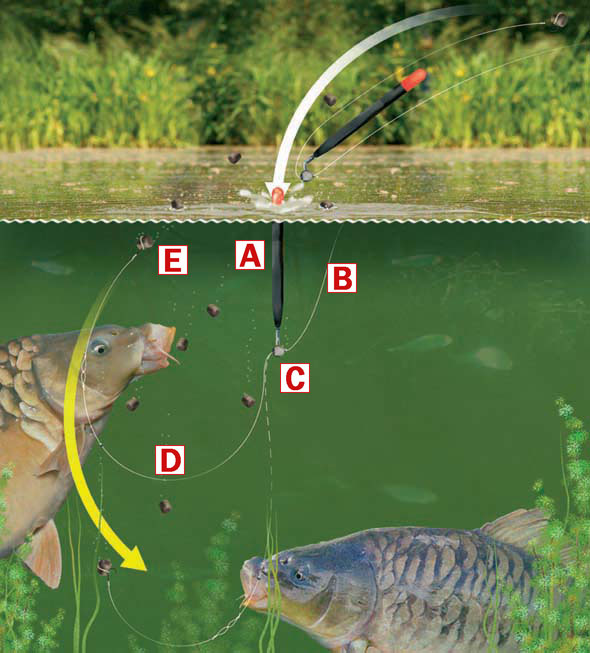How to fish for commercial carp using a splasher waggler rig
The splasher waggler has taken the match world by storm this last couple of seasons, accounting for some absolutely massive hauls.
It’s a great way to fish too as it’s a very active method when fished correctly as you will be feeding, casting, retrieving and playing fish all the way through the day.
It works on the principle that sound means free food. Carp soon associated the plop plop plop sound of large pellets hitting the water with the arrival of even more fresh grub, so this technique mimics the sound, tricking the fish into turning to have a look, then they see the slowly falling bait and rush to take it.
The key to this method is to use the right float – a true splasher waggler. They are short, fat balsa floats capable of carrying a lot of shot. And it’s this reason why they make such a splash when they land on the surface.
But, even though they need a lot of shot, the sight tips are large and therefore very buoyant – this helps prevent the float from diving too far under the water when it lands.
You will find that there are both loaded and unloaded splasher wagglers available. The loaded ones cast best because they are aerodynamic and perfectly weighted. But there’s nothing wrong with the unloaded versions except for the fact that shot must be pinched onto the line, therefore there is a chance that the line could become damaged.
Here’s how to tie a typical splasher waggler rig…
A Use a designated splasher waggler for this method. They are short, fat and straight floats. Here a loaded float has been used, which is the best option, but unloaded floats will still catch plenty of fish.
B Use a strong mainline. 4lb is okay, but 6lb is better as you will be casting frequently and, hopefully, catching a lot of carp too.
C Here the loaded splasher waggler has been locked onto the line using a quick change float adaptor. This is perfect as it won’t damage the line. If you are using an unloaded float, lock it onto the line using large split shot either side of the float.
D Tie on a substantial hooklength strong enough to take the strain of carp. Something like 0.14mm high-tech line will do the job perfectly. Now adjust the length of the rig to suit the conditions. Sometimes a 3ft long rig will be best, but on really hot days when the carp are coming right to the surface a 1ft hooklength is best.
E The best bait to use for this method is definitely a pellet – not a soft expander pellet, but a hard 6mm pellet attached to the hook using a bait band.

